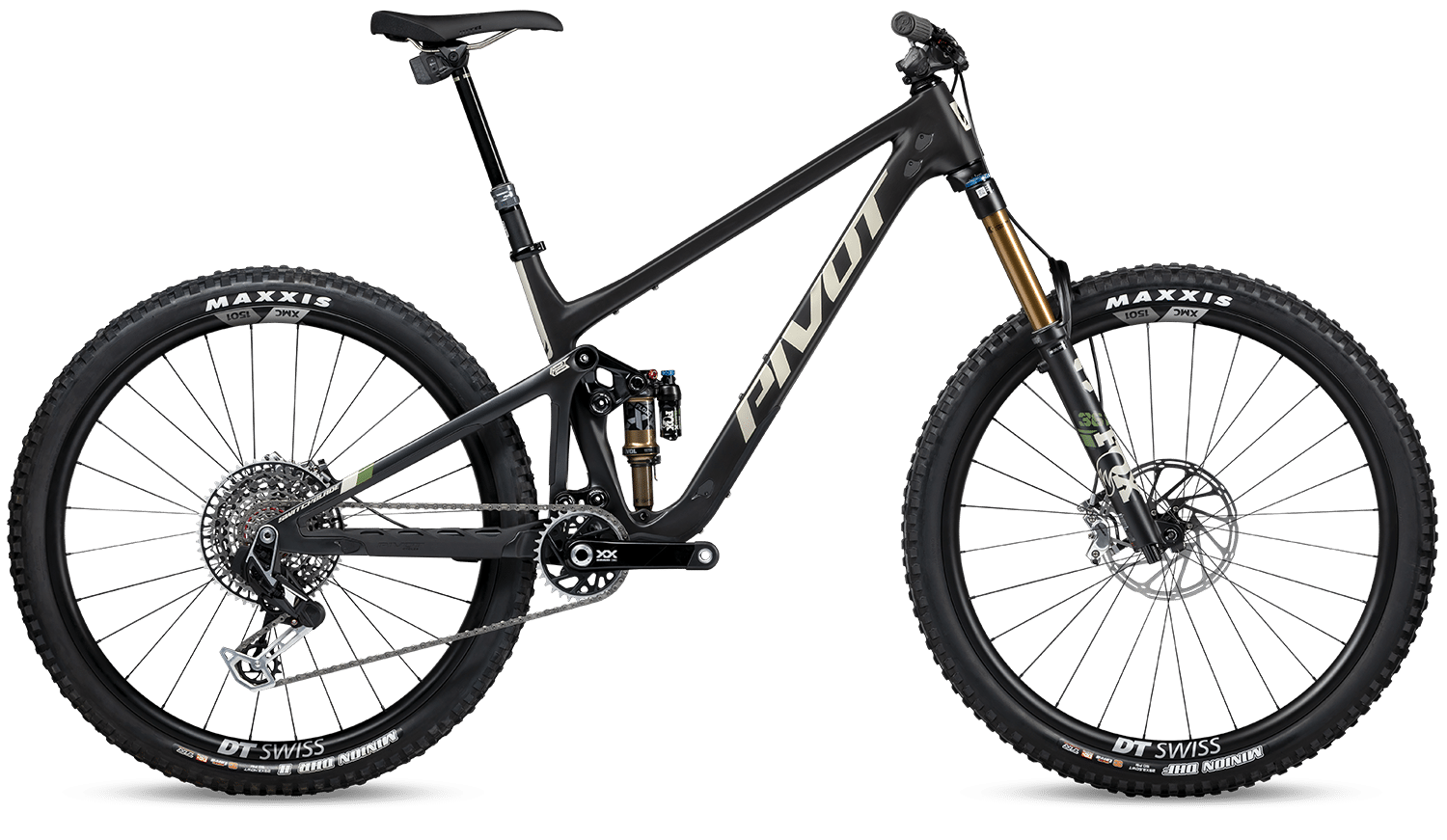FIRST RIDE IMPRESSIONS: PIVOT’S ALL NEW 2024 V3 SWITCHBLADE
Taking an already great mountain bike to new heights?

FIRST RIDE IMPRESSIONS: PIVOT’S ALL-NEW 2024 V3 SWITCHBLADE
Pivot’s third-generation Switchblade is set to build on the model’s reputation as a do-almost-anything mountain bike. According to Pivot, the new model excels in an even broader range of terrain and that’s saying something because it’s that versatility that MBA test riders have loved ever since the model was first released in 2016. The second-generation Switchblade was a massive step forward in performance and is still one of the better bikes in its class the wrecking crew is eager to see just how good the supposedly improved version is.

At a casual glance, the new Switchblade frame does not look all that different from the V2 model. Its carbon front and rear triangles have very similar lines and shapes overall but the top tube is a bit thinner. The biggest change with the frame comes in the form of new geometry. In the low flip chip setting, its head angle is .8 degrees slacker at 65.2 degrees, the seat angle a half-degree steeper at 76 degrees, and the reach is about 10mm longer. Chainstay length is the same as before in extra small through medium sizes but grows slightly and becomes size-specific in large and extra large sizes. The flip chip allows for steepening of the geometry for more agile handling and increased bottom bracket height or to compensate for the use of 27.5” rear wheels. Despite the added reach, Pivot claims the new frame is a few grams lighter than the old one.

The seat tube is straighter allowing for longer dropper post insertion depths that go all the way to the lower dw-link pivot point now. Pivot is still proud to fit a full-size water bottle inside the front triangle in all sizes including the extra small and there is a second set of bottle bosses under the dowtube as well. Accessory bosses are located under the top tube and the bottom bracket for Pivot’s Dock line of tools.

Perhaps the biggest update on the new Switchblade comes in the form of all-new suspension kinematics. Wheel travel is still the same at 142mm but it now features a longer lower link that is more like what you see on the Firebird model. The previous generation shared lower links with the Trail 429 and Mach 4 SL but now it’s much more like the Firebird in length. Pivot says this longer link and new design give the wheel travel a more rearward wheel path for improved descending performance. According to Pivot, the Fox Float X shock tune is the same as before with only a small tweak to the air volume spacer. The front end still sees a 160mm travel Fox 36 fork.

The Switchblade is available in ten different SRAM or Shimano-based builds ranging in price from $6,399 to $11,599. It is offered in Blue Neptune, Stealth Mojave, and a limited edition Pink Neon. This limited edition version celebrates Pivot founder Chris Cocalis’ 35th anniversary of bicycle frame and component manufacturing. Its paint job is a replica of his very first frame: the Sun Eagle Talon. Only 300 of these limited edition models will be offered.
![]()
![]()
FIRST RIDE IMPRESSIONS
We were able to get in a few rides in between So Cal rains on the same trails we tested previous iterations of the Switchblade on. One big difference was the ability to ride a size down from the previous models. Before some test riders sized up to get the reach they preferred but the new model is spot on and more in line with other Pivot models and bikes in the trail and all-mountain categories. One of the first things to jump out at us is the improved rider position. Between that longer reach and steeper seat angle we felt more centered over the bike particularly while climbing.

With all the talk of enhanced descending prowess, a few of us were worried that it might come at the cost of the Switchblade’s superb ascending capabilities but we are happy to report that’s not the case. The new bike feels just as connected and crisp at the pedals under power yet the suspension seems a touch more reactive and compliant with the terrain. The rear wheel is seemingly able to track the ground better and this trait stands out on rocky, rubbly loose climbs where the bike just seems to find grip and squirt forward. Even with the slacker head angle, steering feels precise at lower speeds retaining the overall feel that made the Switchblade a technical climbing mountain goat.
As good as it climbs, descents are really where we felt the biggest change. The new Switchblade is even more predictable and willing to be ridden aggressively now. It has a longer feel to the front end because it is and this seems to come into play on steeper and faster lines. The rear suspension has a new feel to it that just begs to be pushed harder and slammed into things. The rear wheel may have made an interesting sound or two, but the bike keeps straight and feels solid. Another stand-out trait of this bike is just how quiet it is. Other than the faint hum of the DT Swiss rear hub, all you can hear is the sound of the Maxxis tires clawing for traction on the trail.

We will continue testing the new Swtichblade on various trails with different riders but the new bike seems to be an improvement on every front – an impressive feat given how good the previous version was. Look in the pages of Mountain Bike Action for a long-term review and check out Pivot’s website for more information.





